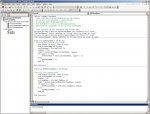Hello everyone - I'm new.
I am presently designing a database (Access 2003) for my team at work. The database is fairly simple in the scheme of things and will be used for keeping volunteer details plus training they have received etc.
The DB will be used by 5 people including myself all of which have seperate machines.
I will have Admin rights but I want to lock everyone else out of everything except data entry, edit, delete etc.
I will want to split the DB for multi user use (I don't know if I should do this before or after the security?).
Could anyone explain to me how I should go about doing this? I have tried using the Security Wizard but it has only been successful when using the "create a short cut" option. I take it that I do not want to do this as each user will have a front end installed on their machines.
Any help will be greatly apprecaited
I am presently designing a database (Access 2003) for my team at work. The database is fairly simple in the scheme of things and will be used for keeping volunteer details plus training they have received etc.
The DB will be used by 5 people including myself all of which have seperate machines.
I will have Admin rights but I want to lock everyone else out of everything except data entry, edit, delete etc.
I will want to split the DB for multi user use (I don't know if I should do this before or after the security?).
Could anyone explain to me how I should go about doing this? I have tried using the Security Wizard but it has only been successful when using the "create a short cut" option. I take it that I do not want to do this as each user will have a front end installed on their machines.
Any help will be greatly apprecaited

